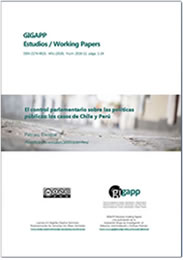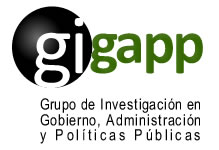La influencia de los actores políticos en la agenda mediática: El caso de Ecuador
Resumen
La llegada al Gobierno de Ecuador de Rafael Correa (Alianza País) en 2007 introdujo algunas modificaciones que influyen directamente en la configuración del sistema mediático del país (Hallin y Mancini, 2004). Desde entonces, el clima comunicacional en Ecuador está marcado por un enfrentamiento entre el presidente y los medios de comunicación privados, lo cual deriva en altos niveles de polarización. Este paper realiza una aproximación a la relación entre el Gobierno y los medios, a partir de la premisa de que, en el caso de Ecuador, el primer momento en el establecimiento de la agenda (McCombs, 2004) viene determinado por la agenda política, la cual puede convertirse en un factor de noticiabilidad (Schulz, 1995). Para ello, realizamos un análisis de contenido de la prensa de referencia ecuatoriana (El Telégrafo –público– y El Comercio–privado–) y lo ponemos en relación con la agenda política, que estudiaremos a través de los “Enlaces Ciudadanos” (programa de rendición de cuentas de la Presidencia de Ecuador) durante el primer semestre de 2015. Este análisis nos permitirá identificar las agendas de cada uno de los actores mencionados y comprobar si existe relación entre ellas.
Descargas
Derechos de autor 2017 Isabel Ramos, Palmira Chavero Ramírez

Esta obra está bajo licencia internacional Creative Commons Reconocimiento-NoComercial-CompartirIgual 4.0.
Aquellos autores/as que tengan publicaciones con esta revista, aceptan los términos siguientes:
a. Los autores/as conservarán sus derechos de autor y garantizarán a la revista el derecho de primera publicación de su obra, el cuál estará simultáneamente sujeto a la Licencia de reconocimiento de Creative Commons Attribution-NonCommercial-ShareAlike 4.0 International (CC BY-NC-SA 4.0) que permite a terceros compartir la obra siempre que se indique su autor y su primera publicación esta revista.
Con esta licencia de acceso abierto, los lectores (usuarios) pueden:
- Compartir — copiar y redistribuir el material en cualquier medio o formato
- Adaptar — remezclar, transformar y construir a partir del material
Bajo los siguientes términos:
-
Atribución — usarios deberán dar crédito de manera adecuada, brindar un enlace a la licencia, e indicar si se han realizado cambios. Puede hacerlo en cualquier forma razonable, pero no de forma tal que sugiera que usted o su uso tienen el apoyo de la licenciante.
-
NoComercial — usuarios no puede hacer uso del material con propósitos comerciales.
-
CompartirIgual — Si remezcla, transforma o crea a partir del material, usuarios deben distribuir su contribución bajo la misma licencia del original.
-
Sin restricciones adicionales: los usuarios no pueden aplicar términos legales o medidas tecnológicas que restrinjan legalmente a otros de hacer cualquier cosa que permita la licencia.
b. Los autores/as podrán adoptar otros acuerdos de licencia no exclusiva de distribución de la versión de la obra publicada (p. ej.: depositarla en un archivo telemático institucional o publicarla en un volumen monográfico) siempre que se indique la publicación inicial en esta revista
c. Se permite y recomienda a los autores/as difundir su obra a través de Internet (p. ej.: en archivos telemáticos institucionales o en su página web) antes y durante el proceso de envío, lo cual puede producir intercambios interesantes y aumentar las citas de la obra publicada. (Véase El efecto del acceso abierto).



